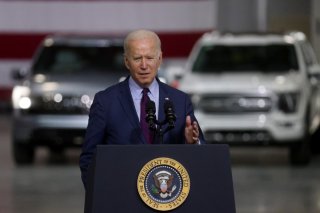More Stimulus Payments are Coming? That Depends on Your Address
Many financially wounded Americans are now hoping that their respective states can step in to provide the necessary monetary relief.
Here's What You Need to Remember: As part of President Joe Biden’s $1.9 trillion legislation, the guidance on the State and Local Coronavirus Fiscal Recovery Fund includes $350 billion in direct cash funds to states, counties, cities, and tribal governments that have populations of more than fifty thousand.
For many cash-strapped Americans struggling to keep their heads above water amid the ongoing pandemic, the third round of $1,400
coronavirus stimulus checks under the American Rescue Plan is already considered yesterday’s news.
And as the possibility for a fourth round of stimulus payments continues to decline as weeks go by, many financially wounded Americans are now hoping that their respective states can step in to provide the necessary monetary relief.
To date, know that two states already have taken the initiative to approve their own stimulus checks for their residents. Earlier this year, Maryland sent out direct payments to those who claimed the earned income tax credit on their 2019 state tax returns. These individuals were able to receive $300, while families got $500.
Also, California in February approved the Golden State Stimulus program, which disbursed payments of $600 or $1,200. More recently, Gov. Gavin Newsom proposed a second round of $600 state stimulus checks, with the aim to expand the payments to also include middle-class families. If passed, this would make two-thirds of the state’s residents eligible for the stimulus funds.
Now, it appears that New Jersey can be added to this growing list, as the state looks primed to give a $500 tax rebate to low- and middle-income residents. The payments are expected to head out to eligible citizens in July.
“It’s a done deal in my mind. In fact, I think it needs to be made permanent, but we’ll have to talk about that going forward. We did this to help the middle class. Well, the middle class needs to be helped all the time, not some of the time,” Senate President Stephen Sweeney told NJ.com.
“What we’re hoping is that it takes a little of the pressure off. It’s not the end-all, be-all, obviously, it’s $500. But it’s $500 more than they had. And we’re still in strange times, and I’m hoping it helps,” he added.
According to the recently released spending rules by the U.S. Department of Treasury, it appears that other states can offer direct payments to their residents.
As part of President Joe Biden’s $1.9 trillion legislation, the guidance on the State and Local Coronavirus Fiscal Recovery Fund includes $350 billion in direct cash funds to states, counties, cities, and tribal governments that have populations of more than fifty thousand. There is also a particular section that says that governments can, in fact, disburse money for direct assistance to households who have been hurt by the health crisis.
These individuals have “experienced unemployment or increased food or housing insecurity or is low- or moderate-income experienced negative economic impacts resulting from the pandemic,” the Treasury said.
Ethen Kim Lieser is a Minneapolis-based Science and Tech Editor who has held posts at Google, The Korea Herald, Lincoln Journal Star, AsianWeek, and Arirang TV. Follow or contact him on LinkedIn. This article first appeared earlier this year.
Image: Reuters.

